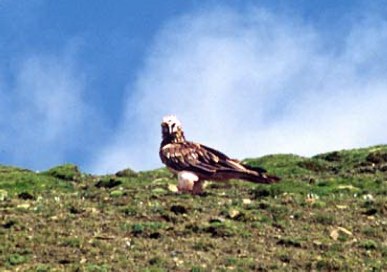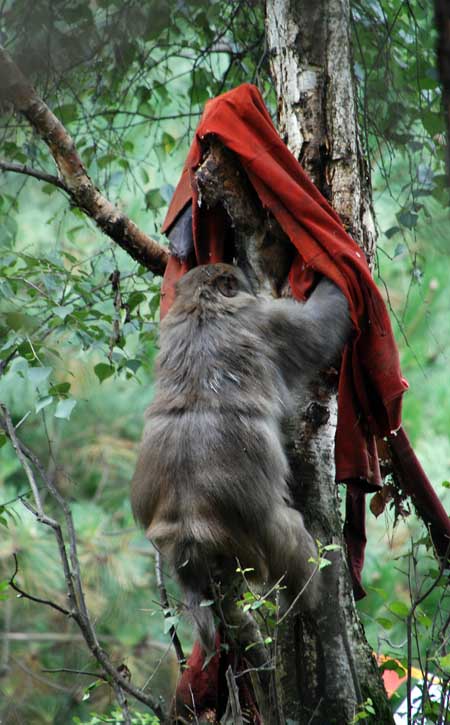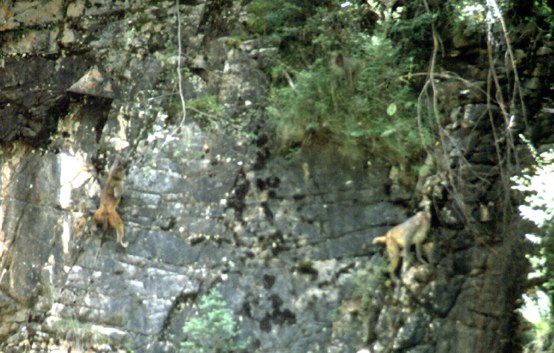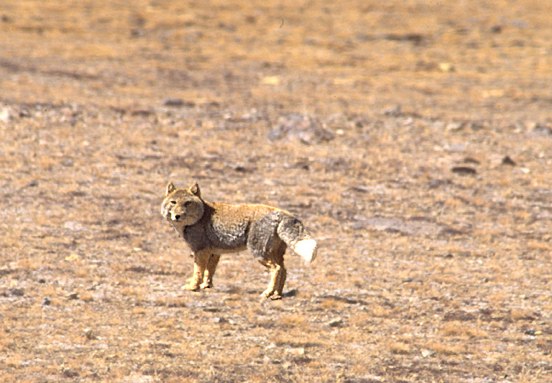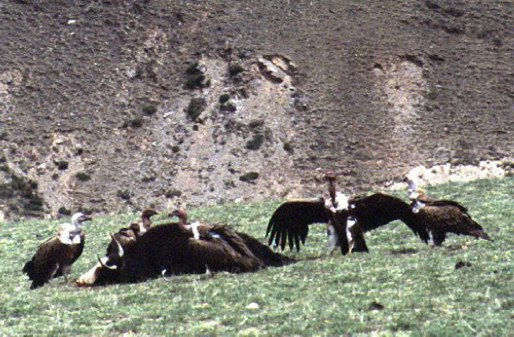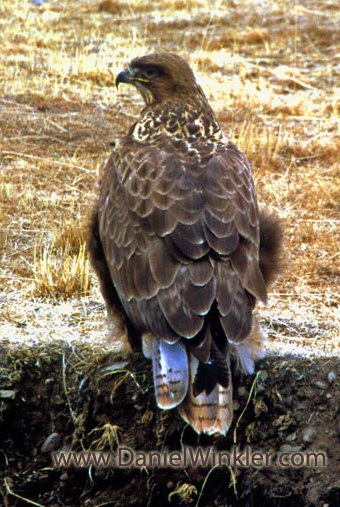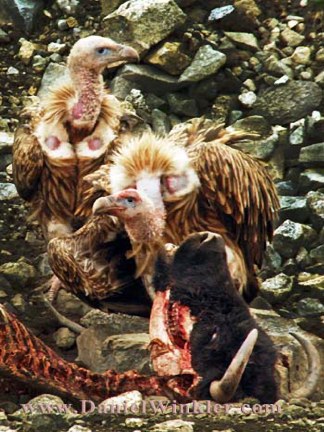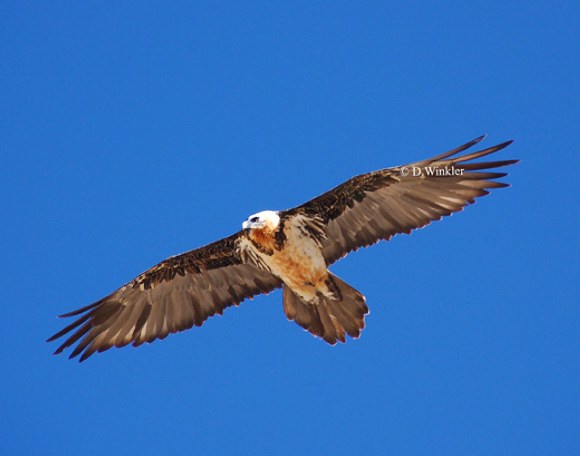 |
The Bearded Vulture is Eurasia's biggest raptor. It is traditionally regarded as sacred in Tibet, because they usually do not prey upon living animals, but feed on carcasses.
This Bearded vulture was walking up a hill, so it would have a better take-off position. It takes a lot of energy to get such a massive body up in the air. © D. Winkler, October 2001, 4200m, Sershul / Serxu County, Kandze / Ganzi TAP, W-Sichuan |
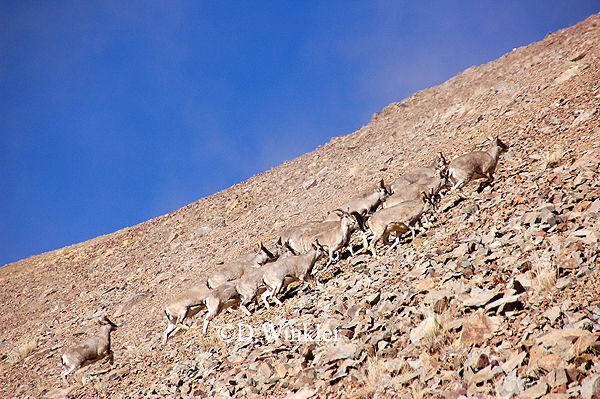 |
Just below the airborne Bearded vulture was this herd of |
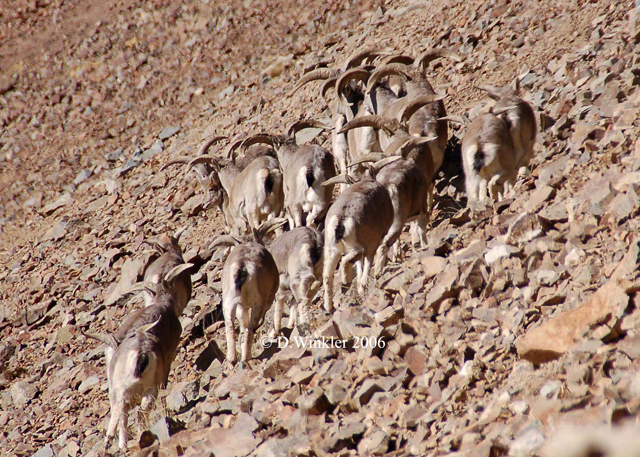 |
Same herd© Daniel Winkler, December 2006, 5000m, Shigatse Prefecture, Tibet AR A tamed Blue sheep at Tsurpu Monastery, the seat of the Karmapas in Central Tibet.© Daniel Winkler, September 1998, Tsurphu Monastery,Tolung Dechen County, Lhasa Municipality, Tibet AR  |
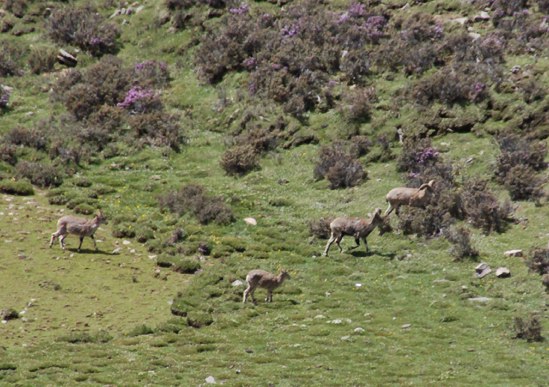 |
Blue Sheep "Family" on Kongpo Bar La (Pinyin: Mi La) close to the Lhasa - Nyingchi Highway.© Daniel Winkler, June 2006, 4500m, Meldrogongkar County, Lhasa Municipality, Tibet AR |
|
|
On the left: |
|
A Tibetan sand fox (Vulpes ferrilata) encountered in the south of the Changtang. More on this fox species. Note how well the fox's fur picks up the coloring of the winter landscape. Foxes are of great help to keep the rodent population in check, especially Pikas (mouse-hare, (Ochotona spp.). The Tibetan sand fox is much bigger than the common fox, which is also present in Tibet, but in forest areas. The sand fox is specialized in making a living in open, arid landscapes of high altitude deserts and steppes. It is endemic to the Plateau.© Daniel Winkler, April 2004, 4500m, Tsochen / Cuoqin County, Shigatse Prefecture Tibet AR. |
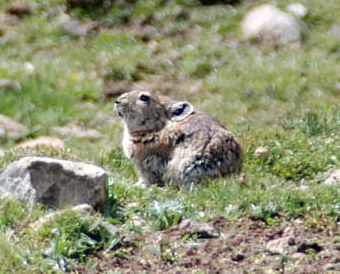 A Source: Smith, A.; Foggin, M. (1999): The Plateau Pika (Ochotona curzoniae) is a Keystone Species for Biodiversity on the Tibetan Plateau. In: Animal Conservation 2: 235-240. |
|
On the left: An Upland Buzzard sat right next to the road in Sershul (on the left). At my first passing I did not believe my eyes. We turned around and I took this picture while driving by. Back then I thought I saw a Golden Eagle, however Marc Foggin, director of Plateau Perspectives pointed out that this is Buteo hemilasius. Lots of big birds of prey hang out on pastures with big populations of Pikas, the mouse hare (Ochotona spp.) © Daniel Winkler, October 2001, 4200m, Sershul / Serxu County, Kandze / Ganzi TAP, W-Sichuan________________________________________________
|
|
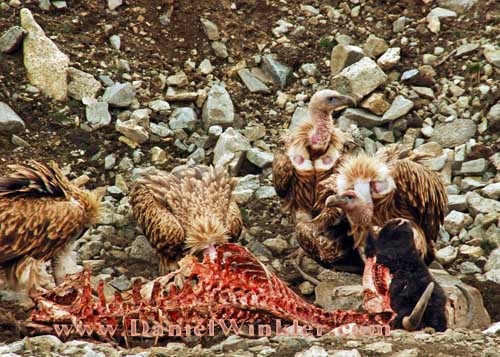 Not much left of this feast! I was driving up Drolma Valley and all these bearded vultures, I counted up to twenty and quit at that point, were flying over me out of the valley. We drove around a curve and there were 30 vultures around this carcass. But they were all perfectly looking their vulture part with their nearly naked, lightly downed necks, being Not much left of this feast! I was driving up Drolma Valley and all these bearded vultures, I counted up to twenty and quit at that point, were flying over me out of the valley. We drove around a curve and there were 30 vultures around this carcass. But they were all perfectly looking their vulture part with their nearly naked, lightly downed necks, being |
A close up from the left of Gyps himalayensis© Daniel Winkler, May 28, 2009, 4500m, Nagchu / Naqu County, Nagchu / Naqu, Prefecture Tibet AR. |
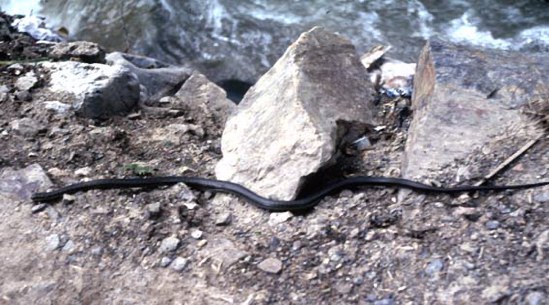 Probably, Thermophis baileyi (Wall.), the |
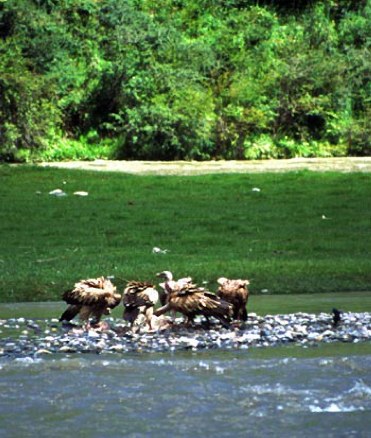 Himalayan Griffons feeding in Derge, Ganzi TAP, W-Sichuan 1998 © Daniel Winkler |
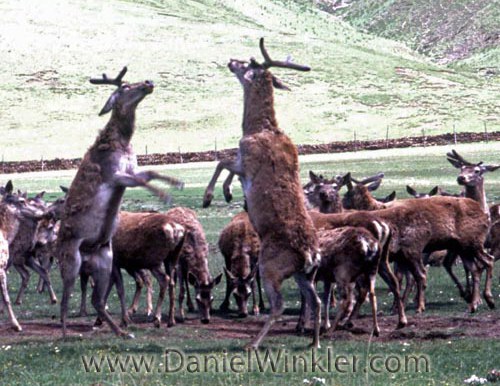 |
A captive herd of |
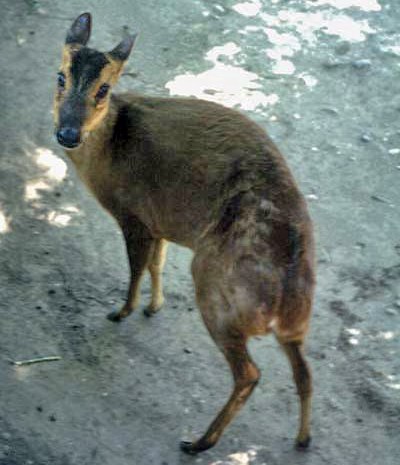 |
On the left a
Photos © Daniel Winkler: Left, June 13, 1997, Beijing Zoo, right: Litang, Ganzi TAP, April 2001
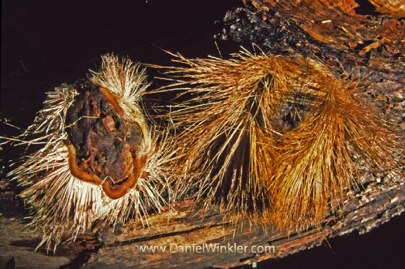 |
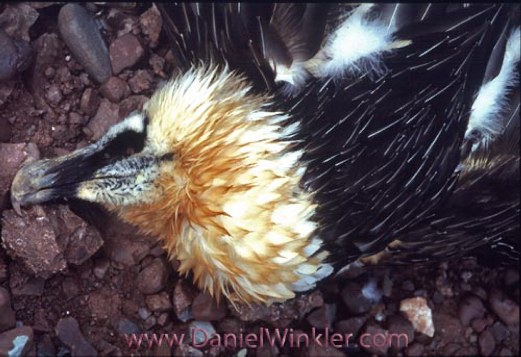 This bird was not as lucky. I came across its carcass on the Sichuan-Tibet Highway on a pass in Chamdo. It looked like the vulture tried to pick up some road kill and joined its lunch date's fate.
Although South Asia has lost over 95% of its vulture population from the mid 1990s onward, after eating cattle carcasses tainted with diclofenac, an anti-inflammatory painkiller given to sick cows, Tibetan vulture populations were not impacted.
© Daniel Winkler August 1998, 4500m, Chamdo County, Tibet AR
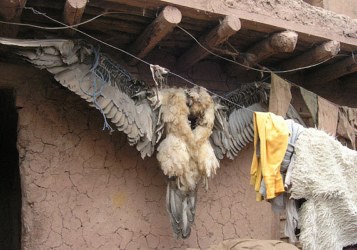 Another unfortunate Bearded vulture at least hanging under an eave in the dry.
Or will it be a better rebirth when you end up hanging in a monastery?
Lithang Gompa © Daniel Winkler November 1999, Litang County, Ganzi TAP, W-Sichuan
|
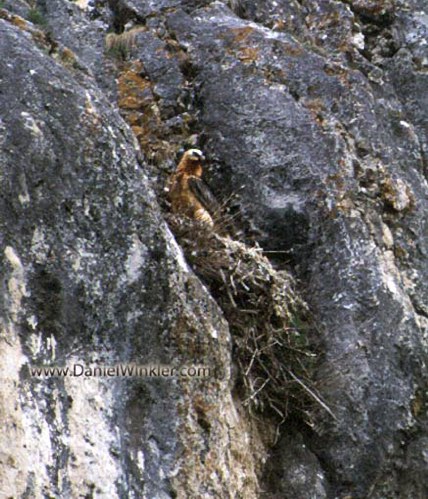 Bearded Vultures (Gypaetus barbatus) are a common sight in Tibet. The one to the left is nesting right above the sacred cave of Mt. Trakaniri where it raised a chick with its partner in 1999. Although a lot of people stop by at this site the bearded vulture did not budge much back then. UPDATE: I revisited this place in July 2012 and there are no nesting Bearded vultures anymore.
© Daniel Winkler November 1999, 4400m, Litang County, Ganzi TAP, W-Sichuan
|
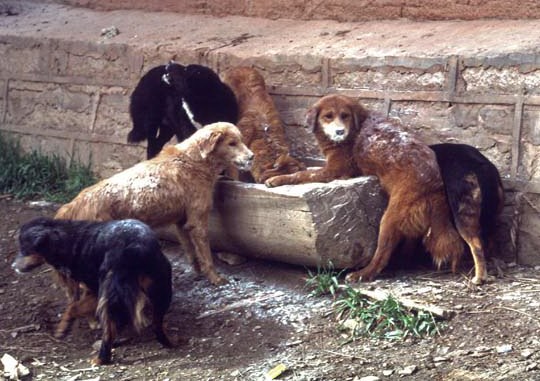 Maybe this picture is misplaced under wildlife. Dogs in Palpung monastery are being fed a vegetarian diet with Tsampa, roasted ground barley. Palpung monastery is the seat of the Tai Situpas in Derge. © Daniel Winkler August 1998 Palpung, Derge / DegeCounty, Kandze / Ganzi TAP, W-Sichuan
|
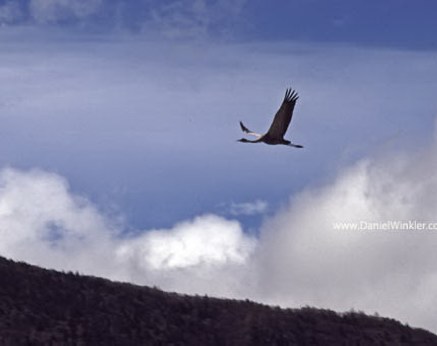 © Daniel Winkler April 2004, Dartsedo / Kangding County, Kandze / Ganzi TAP, W-Sichuan
|
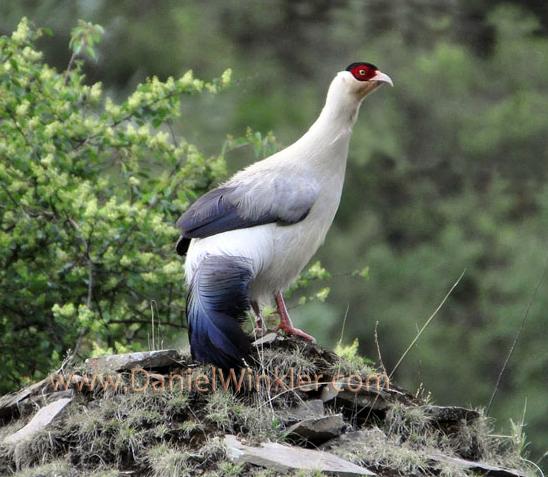 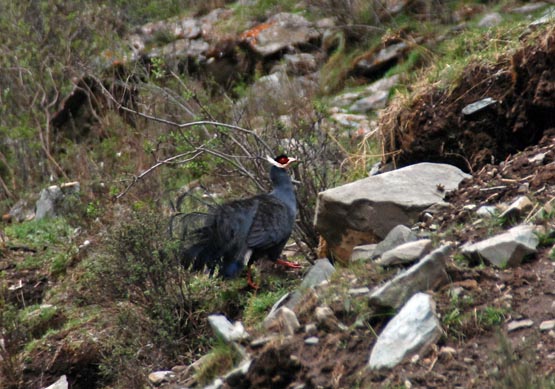 © Daniel Winkler June 6, 2010 Halong near Amnye Machen, Machen / Maqen County, Golok / Guoluo TAP, Qinghai Province. |
MushRoaming Cordyceps May / June 2010-
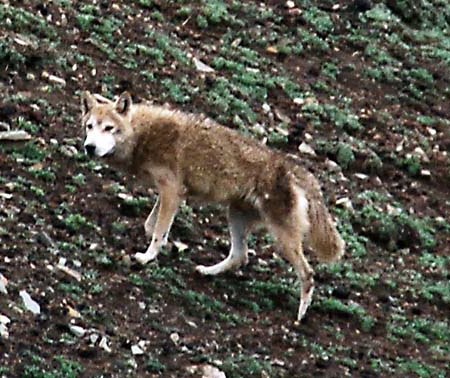 © Daniel Winkler June 4, 2010
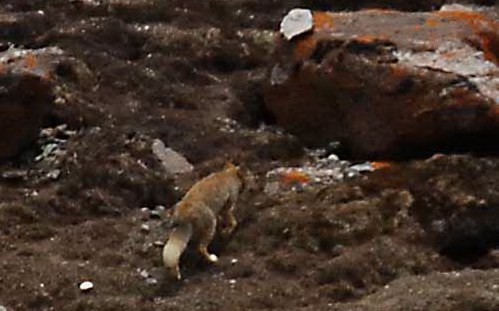
A fox (Vulpes sp.) also hunting Pika, (Ochotona spp.). Spotting foxes is fairly common, at least more common than encountering a wolf.
© Daniel Winkler June 6, 2010 Halong near Amnye Machen, Machen / Maqen County, Golok / Guoluo TAP, Qinghai Province
|

